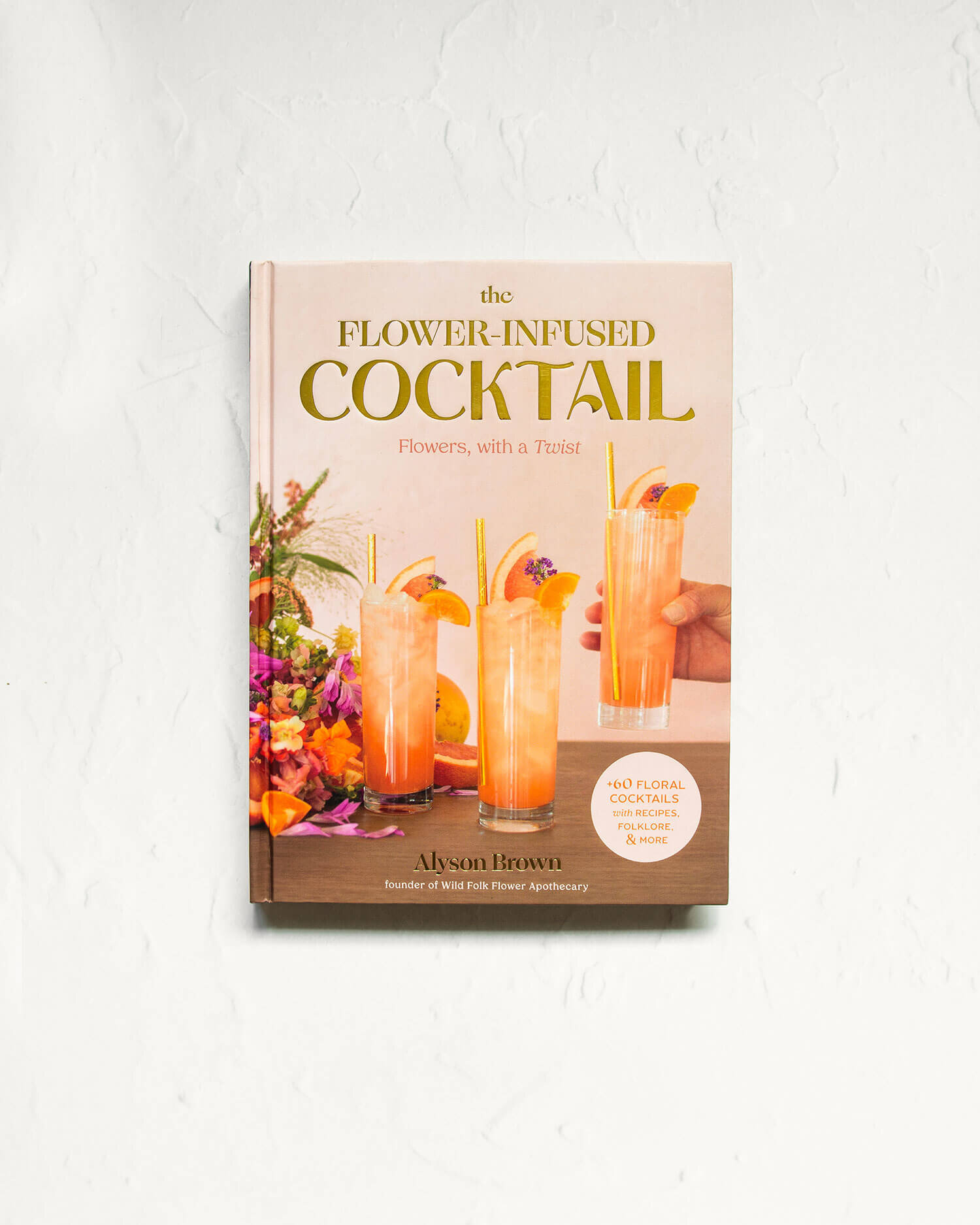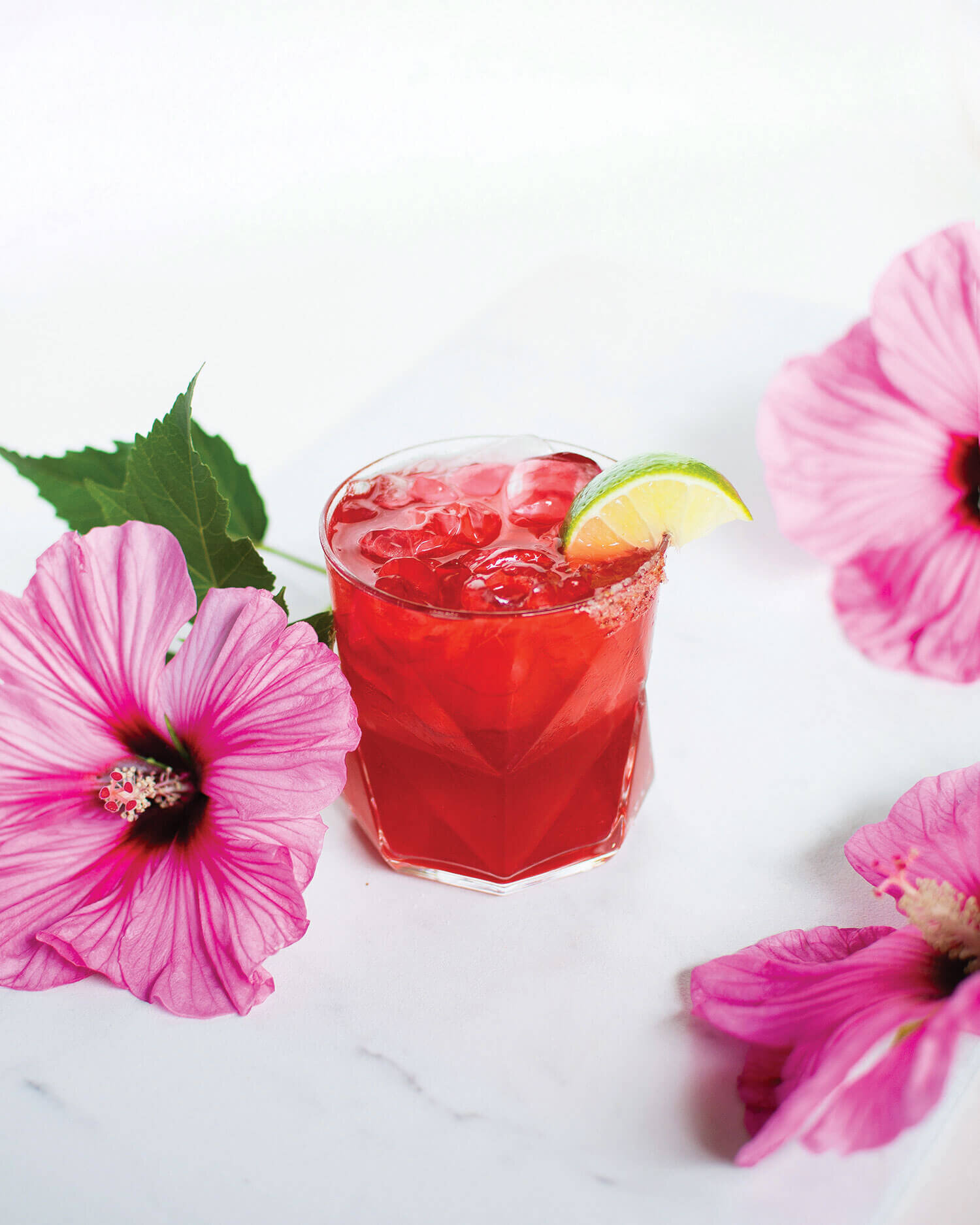Book Review: The Flower-Infused Cocktail: Flowers with a Twist by Alyson Brown
More and more, our senses are focusing on transparency of ingredients in… everything. Politics, people, food. And cocktails, certainly—with painstaking ingredient lists at bars and consumers just generally curious about provenance—are part of that modern progression (or regression?) to know what we’re eating, sipping, and slathering on. As much for our own health, that of our loved ones, and the imprint we’re leaving behind with the choices we make, both small and large.
Flower enthusiast Alyson Brown’s self-published book, The Flower-Infused Cocktail: Flowers with a Twist ($29.95), covers 60 flowers and about the same amount of uses in infusions, cocktails, mocktails, tinctures, teas, and garnishes crafted by Brown from her lifestyle-focused, flower-consulting business based in Bend, Oregon, Flower Folk Apothecary. Brown’s enthusiasm and love of the world of flora is robust and certainly comes across on the 180 or so pages of this book, with its bountiful bouquet’s worth of beautiful photographs (helpfully demonstrative for flower identification), which Brown snapped herself.
Beyond the Garnish
More than a boutonniere on a Boulevardier, The Flower-Infused Cocktail is an excellent place for the flower-curious cocktail enthusiast to up his drink-making game. For each botanical bit, Brown gives a snack-sized bit of background—enough to inform and, in most cases, help you use the beauty in question to its best effect. It informs you enough to make good use of the blossoms inside (and stock up on cocktail conversation starters); a perfect posey of pointers—but it’s not so dense that you feel you’ve wandered into a briar patch of so much more information than you really wanted or needed to know. It does whet the appetite to learn more, though—which is an awfully nice thing to contemplate when sipping on a spicy nasturtium-based Botany Spritz. Brown will indeed crack open your interest in exploration, especially when you learn things like there are 1,200 species of begonias, thyme was once used as part of the embalming process, dill was thought to ward off witches, and lavender’s alluring apothecary uses can be traced back at least 2,500 years. Brown has more than done her homework and is happy to tutor you on the basics.
A Floral Expert
While she does not have behind-the-stick bartending-world chops, her knowledge of floral aroma and flavor leads to some seriously intuitive and cool creations, like adding a dash of matcha powder to her nutty, amaranth-spiked creation, Unwithering, a clever, tiki-ish drink that layers both sweet and savory flavor. Or the surprising, risk-taking spike of infusing buzz buttons—a curious, tropical, thimble-shaped yellow flower with an amber circle on top that looks, yup, like a button—into mezcal. Why risky? Buzz buttons start out a little bitter and earthy (complementary, certainly, to a nuanced yet big-flavored mezcal) but end with a numbing, tingly sensation (likely why they were used in folk medicine for mouth ailments, like gum disease and toothaches). But instead of shying from the power of the flower, Brown embraces it, casting a shaker tin spell in the zippy Electric Guitar, a drink of spice and citrus, earthiness and sweetness, and just a touch of salt to knit it all together nicely.
There are a few small stumbles that a good copy editor or more attuned cocktail-centric editor would have noticed: There is no discernable answer as to why some flower infusions are said to be okay for up to 6 months and others only offering a shelf life of 2 weeks. Some flowers, like the sturdy carnation, are offered only in the form of its known addition to chartreuse in a cocktail here and a bit of garnish, but no other recipe is offered for playing with the poufy plume (although, certainly, Brown probably has many ideas and uses for it). Vermouth infusions are confusing, because, while vermouths and their ingredients can vary widely—and one would assume the botanically minded Brown has opinions on which ones work better to highlight specific flowers—drinks like the Late-Night Carousel, which infuses artichoke heart into dry vermouth, leave you with a lot of questions: What kind of dry vermouth? How should you get to the heart of the artichoke—carve it out raw or steam it first, and what’s the best way to do that? What does she like about this combo, and what does it offer if you’re already using Cynar in the cocktail, an amaro with artichoke in the mix? And then there’s the esoteric Lambrusco vinegar—why is this ingredient important here? Would any red-wine vinegar do as a substitute? Brown mentions that artichokes have the effect of making other ingredients taste sweeter, but even with that knowledge, one might hesitate to combine the savory and bitter list of ingredients asked for in this cocktail in a glass. Again, an astute booze editor may well have raised the question and given Brown the opportunity for explanation.
But there is indeed much to explore, learn, and enjoy here, and Brown’s knowledgeable, petal-pushing enthusiasm for the topic is worth the price of admission (and will likely become a step-off point for further exploration of your own). With a small but solid-start glossary equipped with outfits that supply edible flowers, botanicals, seeds, bar gear, and further exploratory info on plant sleuthing, The Flower-Infused Cocktail is a good book to pluck for a budding interest (flower puns!!!) in blossoms for booze.


